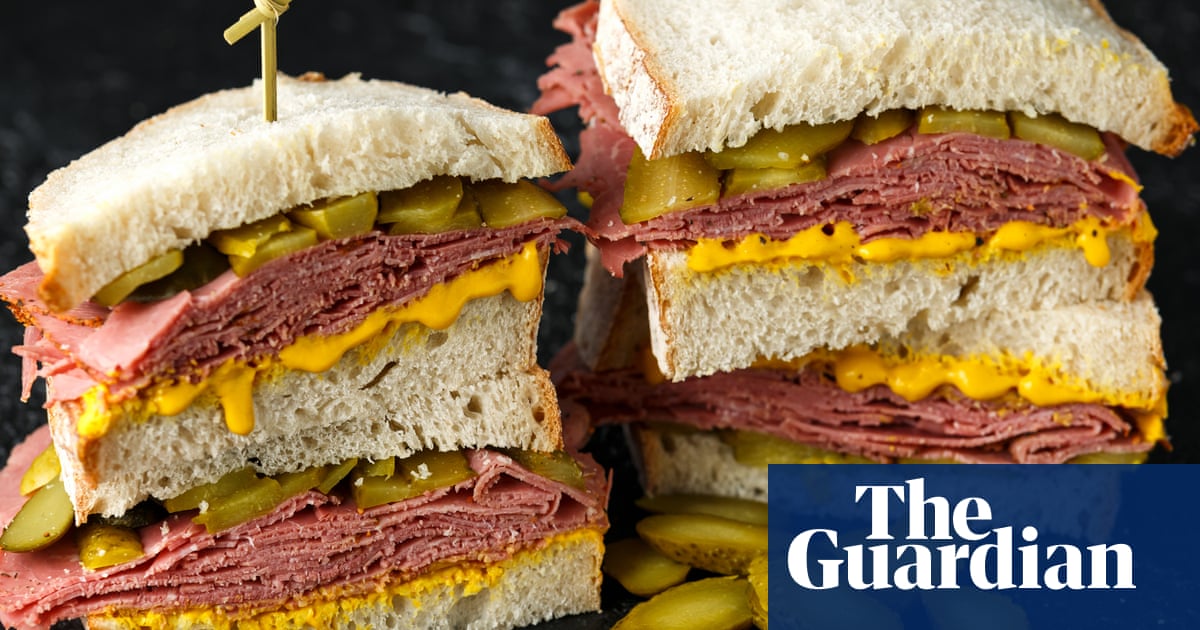What’s the bestloaf tobake for sandwiches, and any filling ideas?“Obviously I’m biased, but soft and squishy sourdough makes the best sandwiches,” saysMartha de Lacey, sourdough teacher and writer. “The flavour is so much more complex and exciting than anything else you could use, and the crumb can have a slight moistness to it, which really contributes to the mouthwatering lushness that you want in a sandwich.”
That’s not to say sourdough doesn’t come without some provisos, mind. First, you want a loaf that’s been baked that same day (“Several hours earlier, ideally,” De Lacey says), with a tender crumb and a nice, thin, crisp crust that “isn’t too teeth-pullingly chewy”. As is often the case, success comes down to the quality of your ingredients: “Use really good flours, not just supermarket basics,” says De Lacey, who favours an 80:20 mix of strong white and granary, and “a pretty high hydration for the requisite soft crumb”. Then, try and try again. “Really practise your preferred sourdough tekkers until you can do it in your sleep. Honestly, the main trick to excellent sourdough is practice – boring but true!”
Phil King, executive chef ofPophamsin London, meanwhile, stands by his bakery’s tin loaf made from a mix of white and 20% rye flour. “It needs to be recognisable as a white sandwich tin loaf, while also giving that earthy, nutty flavour associated with rye bread, only without the denseness.” To achieve something similar, King suggests taking a white bread recipe, cutting the yeast by 80% and using a two-stage rising process: “One before you shape it, then knock it back, put it in the tin and let it have another rise.” This will produce a fluffy texture and even crumb structure, so “you’re not left with large gaping holes that the filling falls through”. Alternatively, try something with a crust on both sides, says Richard Snapes, author ofBread & Butter: “An Italian-style bread such as focaccia or ciabatta, say. People are often scared of them, because they require a wet dough, but they’re not hard to make at home.”
Sandwich construction, meanwhile, should be carried out as close to eating as possible, King says, starting with a fat barrier (butter, mayo, cream cheese) to stop moisture getting into the crumb, and balancing the fillings with the same attention you would give to a main meal. Snapes combines ricotta, olive oil, lemon zest and parmesan to spread on focaccia, then tops with charred asparagus (“if you eat meat, put some speck in there, too”).
And, as summer rolls in, tomatoes are always on De Lacey’s agenda, with a very good home for them being a BLT with plenty of mayo (“homemade orHellmann’s, and absolutely nothing in between”), a load of crisp smoked streaky bacon and crunchy iceberg lettuce. “Anything you put in a salad will also be excellent in a sandwich,” King says, adding that you won’t go far wrong with tomatoes, a good dressing, loads of fresh herbs, maybe a few capers and definitely seasoned “to the max, because the bread will temper those flavours”. Otherwise, cool things down with cucumber: “Big chunks with fresh coriander chutney and loads of cream cheese.”
It’s also worth considering sweet and savoury combos – think rhubarb jam, peanut butter and pancetta, which, King says, “is every shade of wild”. But sarnie satisfaction ultimately comes down to one thing, De Lacey says: “Be liberal with the moistness. There’s nothing worse than forcing a dry sandwich down your gullet.” Shudders
Got a culinary dilemma? Emailfeast@theguardian.com
